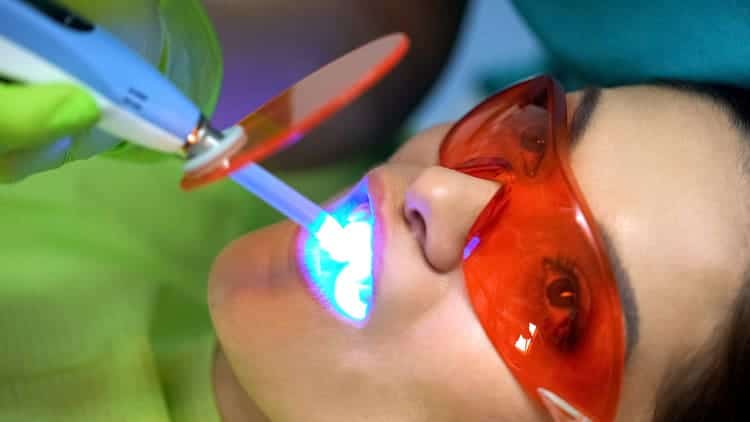Laser Dentistry
Although it was established in the mid 1990’s, the use of lasers in dentistry is still a relatively uncommon practice. Despite this, laser procedures have become increasingly efficient and precise, making them a more than viable option when deciding on treatments. In short, lasers are used to remove material, namely infected material, from teeth and gum tissue, using different lasers that only affect one material at a time. They can be used in place of drills for fillings, remove gum tissues during root canals, perform tissue biopsies and to even speed up whitening procedures.

What Are the Benefits & Limitations of Laser Dentistry?
- Bleeding from soft tissues is minimized as the laser treatment will promote blood clotting.
- Patients are less likely to need any kind of suturing done.
- Anesthesia may not be required with some procedures as lasers are pain-free.
- Tissue may have a better chance at regenerating and wounds will heal faster.
- There may be less damage done to surrounding tissues.
- They can make precise cuts that other tools like scalpels cannot.
Limitations can include the inability to treat large cavities, adjust fillings or bites, shaping or polishing teeth, filling in cavities between the teeth, and repairing defective crowns and bridges.
What Type of Treatments Can Be Done with Laser Dentistry?
Hard Tissue Treatments Include:
- Cavity detection
- Dental fillings
- Tooth preparation for killing bacteria
- Treating tooth sensitivity by sealing tooth tubules.
- Soft Tissue Treatments Include:
- Reshaping gum tissue to remove the appearance of a “gummy smile”
- Lengthening crowns
- Treating a thick or tight frenulum (fold under the front part of the tongue)
- Removing soft tissue folds
Other Treatments Include:
- Removing benign tumors
- Viewing tissues
- Treating obstructive sleep apnea
- Aiding in nerve regeneration
- Treating cold sores
- Providing teeth whitening
- Reducing inflammation in individuals with TMJ disorders.
What Are the Risks with Laser Dentistry?
There are very few risks associated with getting laser dentistry done. The only risk that can cause damage to your teeth or gum tissues is if the wrong wavelength or power level is used for the treatment being done. However, a qualified dental professional, as you will find at Tampa Palms Dentistry, is not likely to make this error.
How Our Approach Makes a Difference to Your Dental Health
When it comes to dental treatment, a lot of individuals would prefer to stay out of our office, as having someone rummaging around your mouth for an hour or two, isn’t the nicest feeling. Here at Tampa Palms Dentistry, we understand that coming in and scheduling an appointment can not only be uneasy and uncomfortable, but it can be terrifying for those who have dental anxiety or feel intense shame around oral care. Our approach looks to offer our patients with a comfortable and welcoming experience that focuses on getting you the treatment you need to help you heal, prevent further complications, and provide you long-lasting solutions.
We offer free consultations and free second opinions for those who are unsure of how to move forward. If you have any questions regarding laser dentistry or think you may need a procedure involving laser dentistry, call us today at (813) 333-1922.



